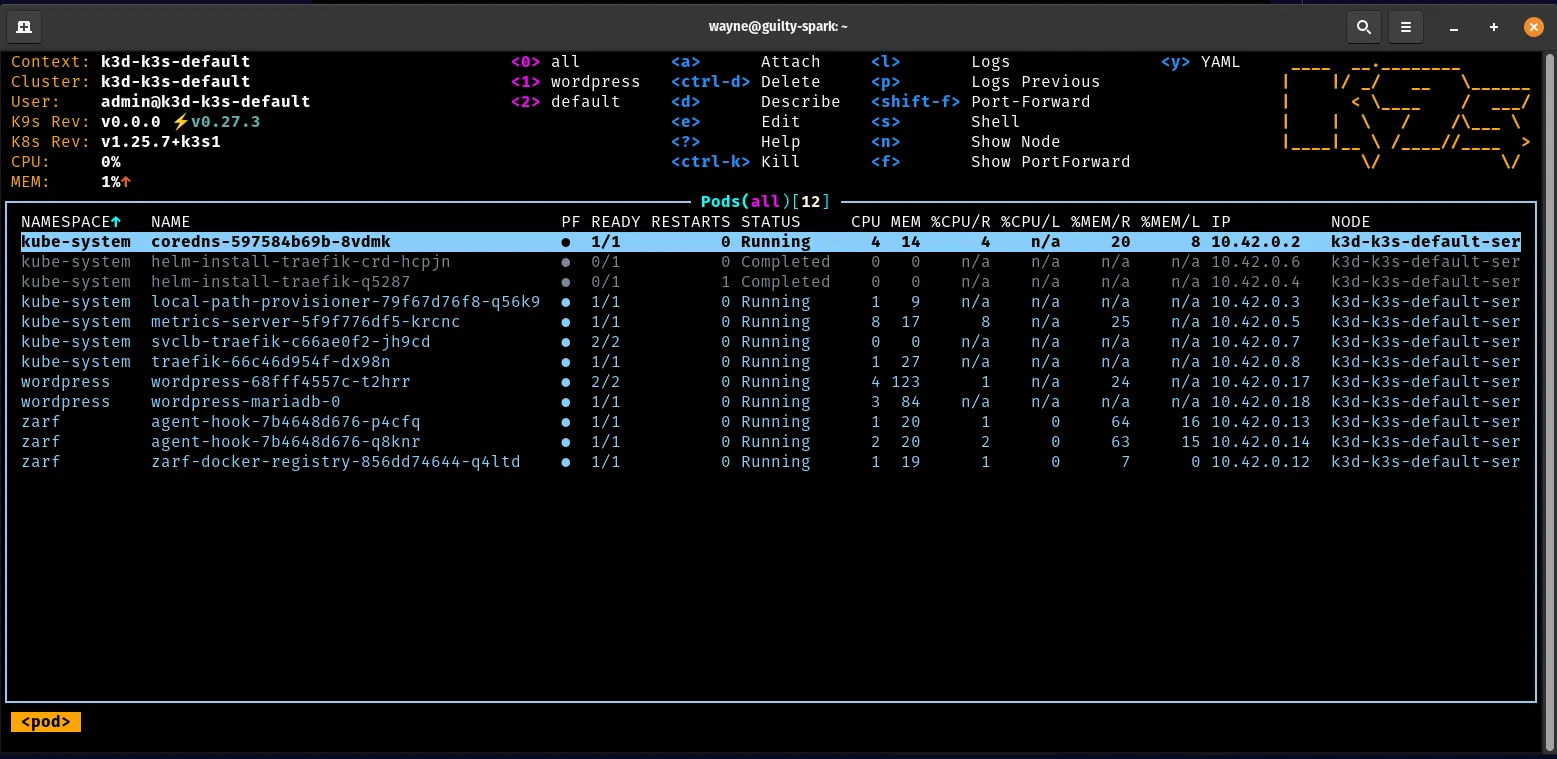Deploying Local Zarf Packages
In this tutorial, we are going to deploy the WordPress package onto your cluster using the package we created in the earlier create a package tutorial and the cluster we initialized in the initialize a k8s cluster tutorial. We will be leveraging that past work to go the extra step of deploying an application we packaged onto our cluster with the zarf package deploy command.
- You’ll need a machine that has access to a built-package and an initialized cluster.
Prior to this tutorial you’ll want to have a built package and a working cluster with Zarf initialized.
- Zarf binary installed on your $PATH: (Installing Zarf)
- An initialized cluster
- The WordPress package created
-
Use the
zarf package deploycommand to deploy the package you built in a the previous tutorial (see prerequisites). -
You will be presented with a chance to review the SBOMs for the package along with its definition followed by a series of prompts for each variable we setup in the previous tutorial. To confirm package deployment press
ythenenterand input a value for each variable when prompted followed byenterfor them as well. -
Because we included the connect services in the previous tutorial we can quickly test our package in a browser with
zarf connect wordpress-blog.
-
We can also explore the resources deployed by our package by running the
zarf tools monitorcommand to startk9s. Once you are done, hitctrl/control cto exit.
- Use the
zarf package listcommand to get a list of the installed packages. This will give you the name of the WordPress package to remove it.
- Use the
zarf package removecommand to remove thewordpresspackage. Don’t forget the--confirmflag. Otherwise you’ll receive an error.
- You can also use the
zarf package removecommand with the zarf package file, to remove the package. Again, don’t forget the--confirmflag.
The wordpress package has now been removed from your cluster.